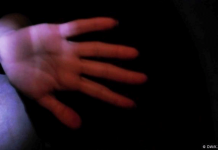ILOILO City – Approximately 414,000 families, or 20.5% of all families in Western Visayas, live below the poverty threshold, according to the Philippine Statistics Authority (PSA).
This preliminary statistics on the region’s poverty for the first semester of 2023, released on Thursday afternoon, highlighted the economic challenges faced by a significant portion of the region’s population.
Under the Social Reform and Poverty Alleviation Act of 1997 (Republic Act 8625), the term “poor” refers to individuals and families whose income falls below the poverty line set by the National Economic and Development Authority (NEDA).
This definition includes those who cannot afford, in a sustained manner, to meet their minimum basic needs for food, health, education, housing, and other essential amenities of life.
Poverty threshold refers to the minimum income a family or individual needs to meet basic food and non-food requirements, also known as the poverty line.
According to PSA-6 data, the monthly poverty threshold for a family of five is P14,206, while the food threshold is P10,005.
Western Visayas ranks ninth among regions with the lowest poverty incidence among families at 20.5 percent, although this figure is higher than the national average of 16.4 percent.
At the national level, the lowest poverty incidence is found in the National Capital Region at 3.3 percent, and the highest is in Region 9 or the Zamboanga Peninsula at 29.7 percent.
Poverty incidence is the proportion of families or individuals whose per capita income falls below the per capita poverty threshold, out of the total number of families or individuals.
The food threshold is the minimum income a family or individual needs to meet basic food requirements, sufficient to satisfy the nutritional requirement for economically necessary and socially desirable physical activities.
PSA-6 data reveal that 7.5 percent, or 151,000 families in the region, are considered “food poor”, with incomes below the food threshold.
Here are additional poverty indicators for the region:
* income gap – 25.3 percent of poor families in the first semester require an additional monthly income of P3,596 to escape poverty
* poverty gap – this increased by 0.3 percentage points to 5.2 percent from 4.9 percent in 2021, indicating a slight rise in the income shortfall among the poor
* severity of poverty, which measures the distribution of income among the poor, increased slightly from 1.8% in 2021 to 1.9% in 2023/PN



